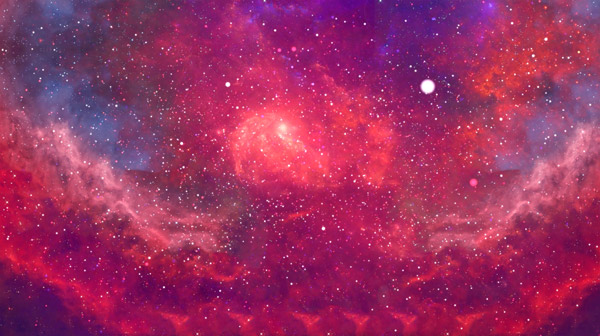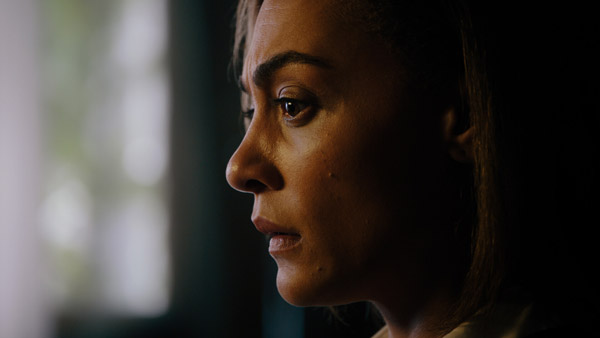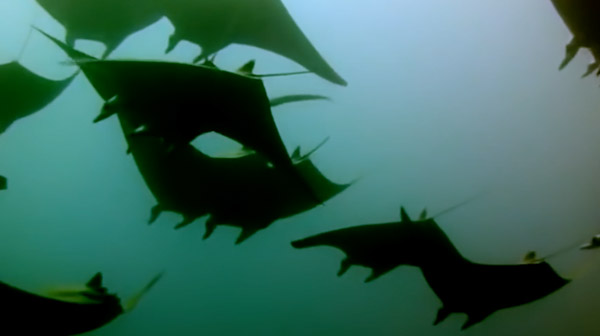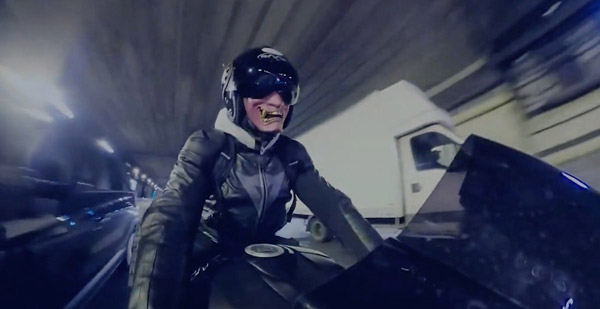
Ela: Breaking Boundaries, a film by Swapna Kurup which screens at the New Jersey Film Festival on Sunday-September 26, 2021, follows artist Ela Shah and how her revolutionary art represents her multifaceted life and complex emotions. Ela, an immigrant from India who traveled to the United States with her family, expressed the challenges she faced as a foreigner through her work. The film details how she makes powerful statements through multiple mediums. Her art comments on themes such as gender roles, cultural identity, and violence. Ela: Breaking Boundaries demonstrates how Ela expresses feelings, facets of herself, and cultural realities beyond words.
The film highlights the inventiveness of Ela’s work in that it challenges cultural stereotypes in a patriarchal society. Ela: Breaking Boundaries showcases groundbreaking imagery such as a woman in traditional Indian clothing who lives as Wonder Woman. Although Ela’s work has traditional Indian aspects like the use of gold and bright colors, there are striking images of pop culture such as the inclusion of fictional characters or the depiction of guns. She conveys issues relating to gender roles and the duality of a woman’s traditional role and her unorthodox aspirations. She represents women in her works as divine goddesses with multiple arms, since just like the goddesses, women do many important things at once.
This film shows how Ela’s passion for creating art was not stifled by cultural expectations. In India, Ela took art classes in secret, despite her mother-in-law wanting her to take traditional classes for women like cooking classes. Nevertheless, she went to art school and learned the traditional aspects of Indian art. These traditional features are evident in her paintings despite their nontraditional messages. Ela’s art depicts women as gallant, capable, and heroic. This contrasts the traditional view of women as simply the docile homemaker. Ela’s art breaks the mold of how women are represented by giving them such reverence as to depict them as goddesses. The film also demonstrates how art is used as a basin to carry emotions. When Ela immigrates to the United States, she faces wrenching challenges. She left behind familiar sights, sounds, and faces when she comes to America. This separation brought gloom and melancholy, so severe that she could not bring herself paint. This causes her to totally shift art mediums. She begins to sculpt, often depicting the same themes of gender roles, cultural expectations, and a woman’s freedom to be multifaceted.
Some works are a representation of Ela herself such as the Peacock Series where she integrates two parts of herself. It’s a culmination of playful images and violent ones. These two sides interact and reconcile with each other. Ela also shifted into utilizing more vivid colors such as in her Flower Series. She explains that flowers taught her not to mourn over fallen leaves, serving as a reminder for Ela to get back up again after a trail. During the inevitable tough times in life, Ela’s art rescued her.
The film also details how Ela shows the immigrant experience in her artwork. There’s a duality in identity and cultural expectations from two dissimilar places. There is a sort of dance in her artwork between these two realms: one representing America and the other India. These two places coexist within Ela’s work such as how there are sacred cows and skyscrapers on the same canvas. This duality of self is also evident in Ela’s mobiles. One side conveys the traditional cultural expectation of an Indian woman, and the other side shows their unhindered selves. For example, one side may show an Indian woman in traditional clothes and the other side shows her as Spider-Man. We also see a duality in the towers she creates. These towers are often churches or temples in a state of decay, which symbolizes goodness and struggle coexisting.
The film describes how Ela doesn’t shy away from unnerving imagery to convey her point. Wooden carvings of guns that Ela created represent violence against women and children. The guns have burn marks on them, just like each of her other works. Ela compares the urge to burn her work to how the Indian god Shiva creates and destroys. However, there is contrast within the piece with the use of hold leaves on the guns. In Ela’s work, there is rarely a one-dimensional representation of her statement. In depictions of destruction, there are images of hope, and in images of traditional Indian imagery, there are American comic book characters.











